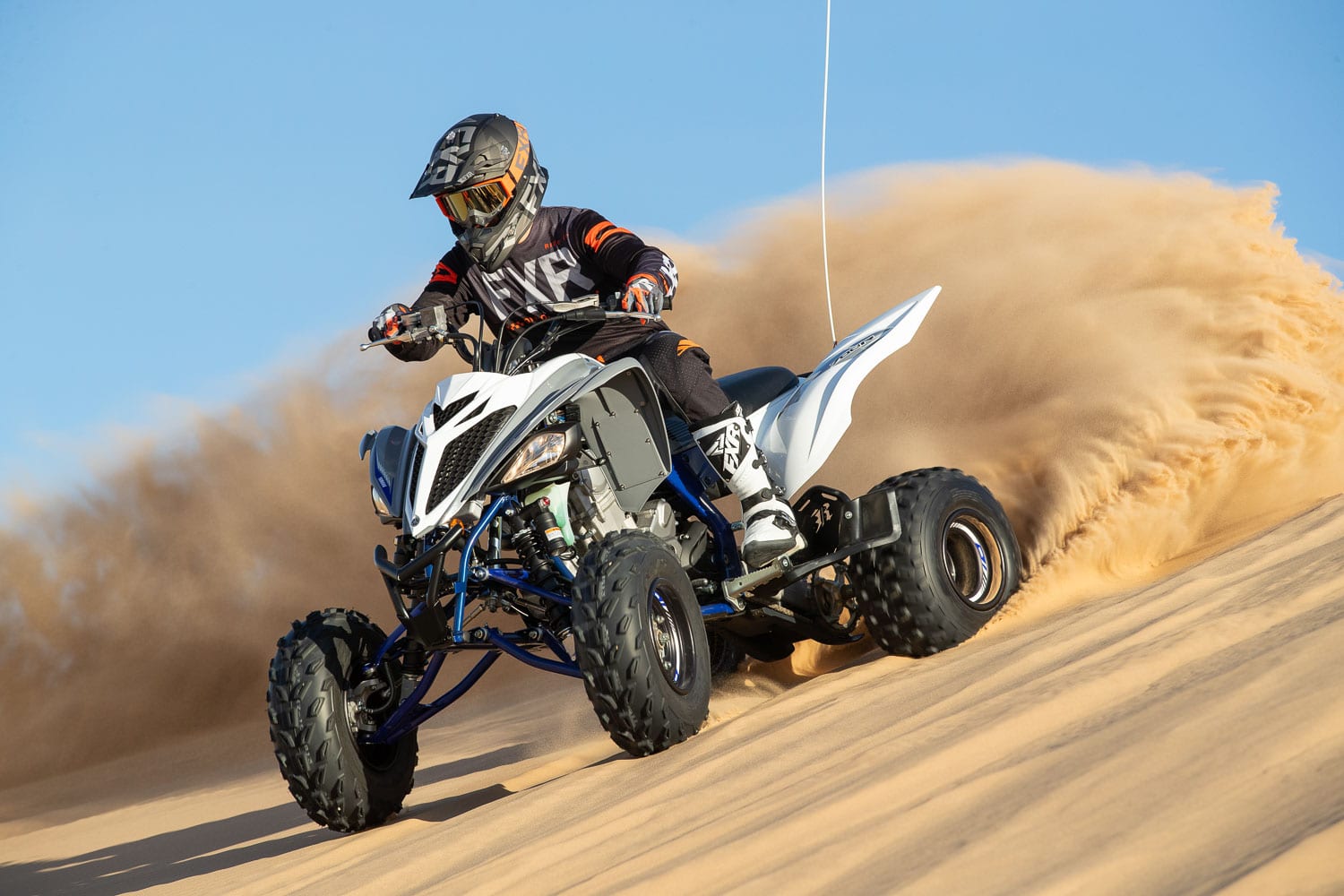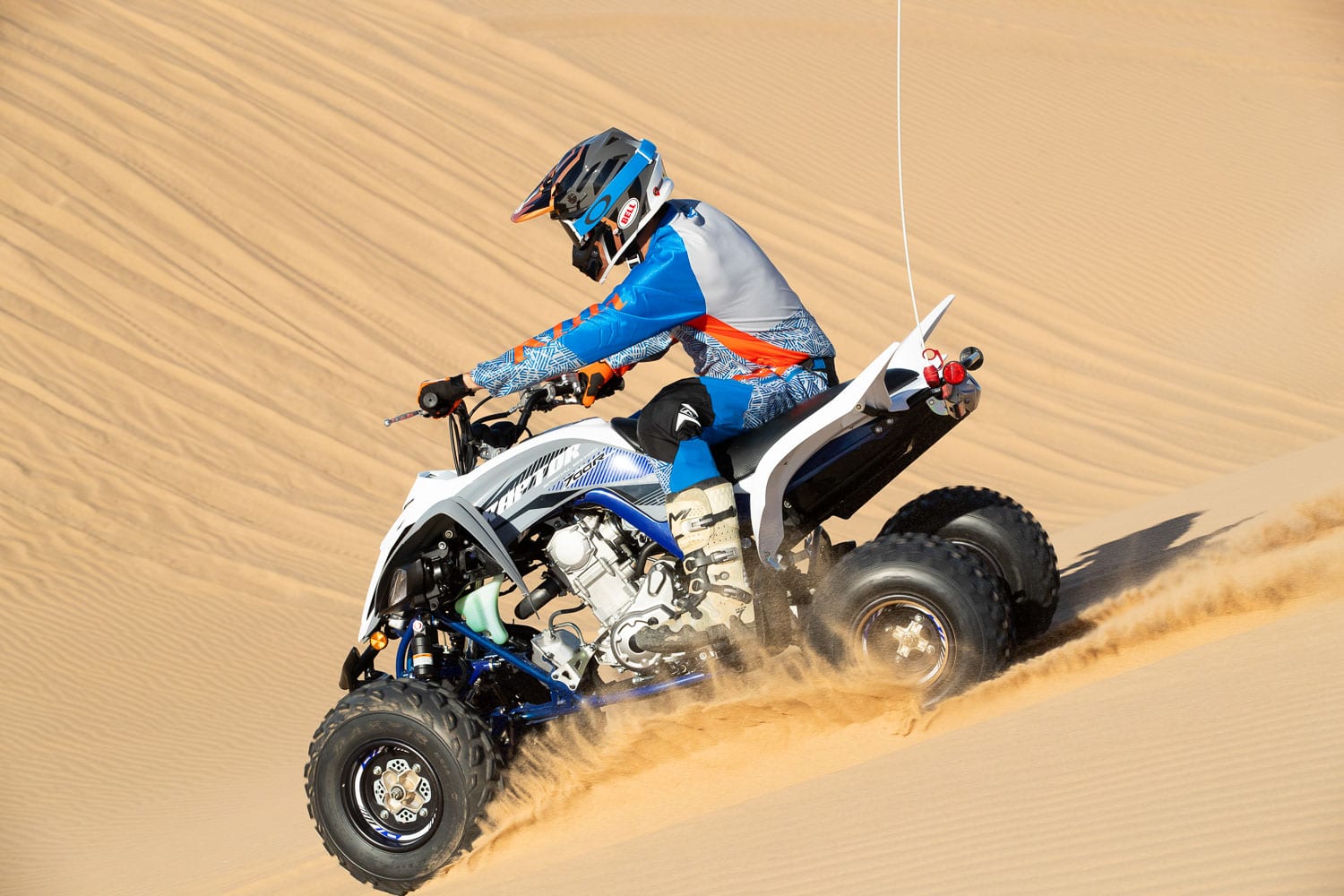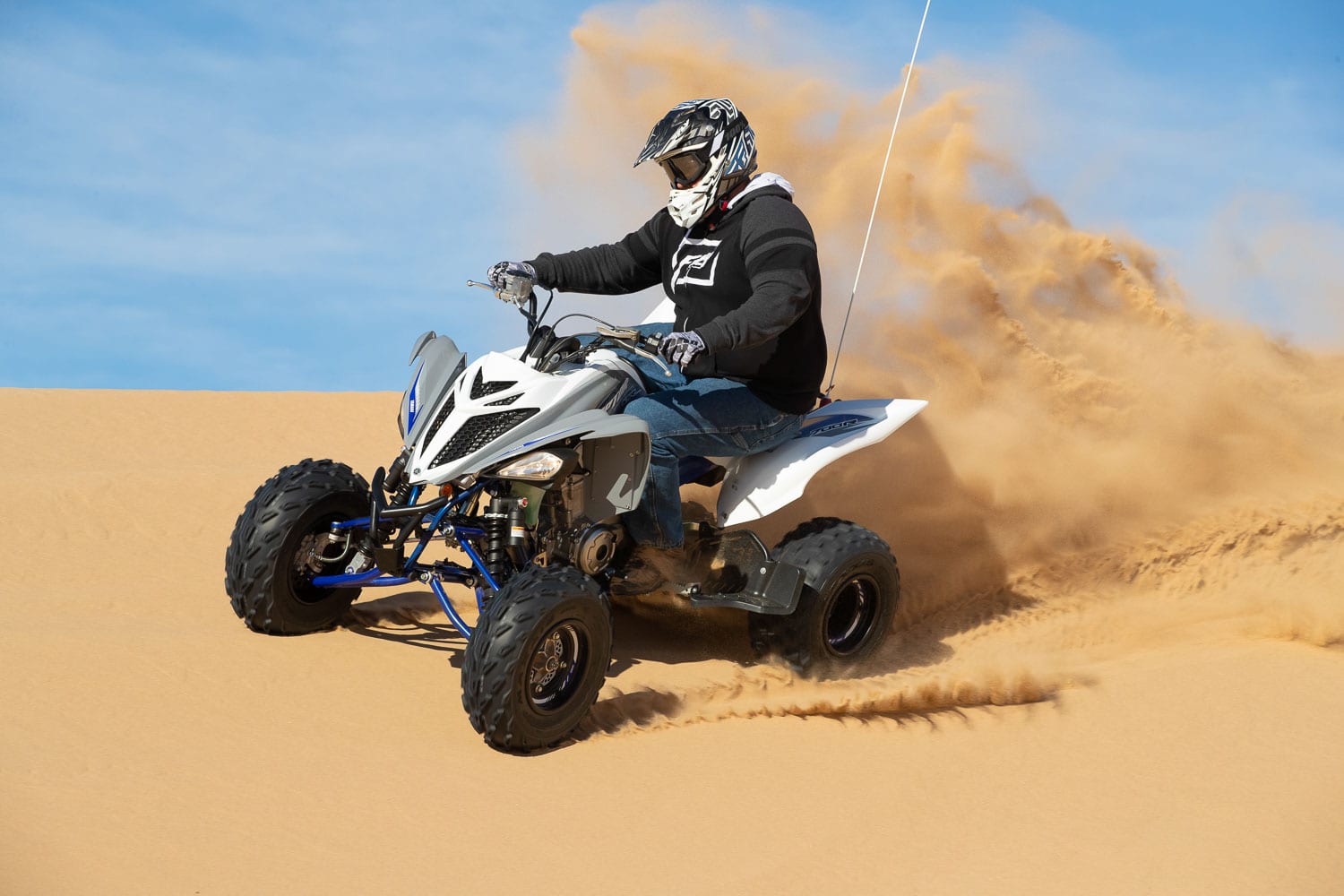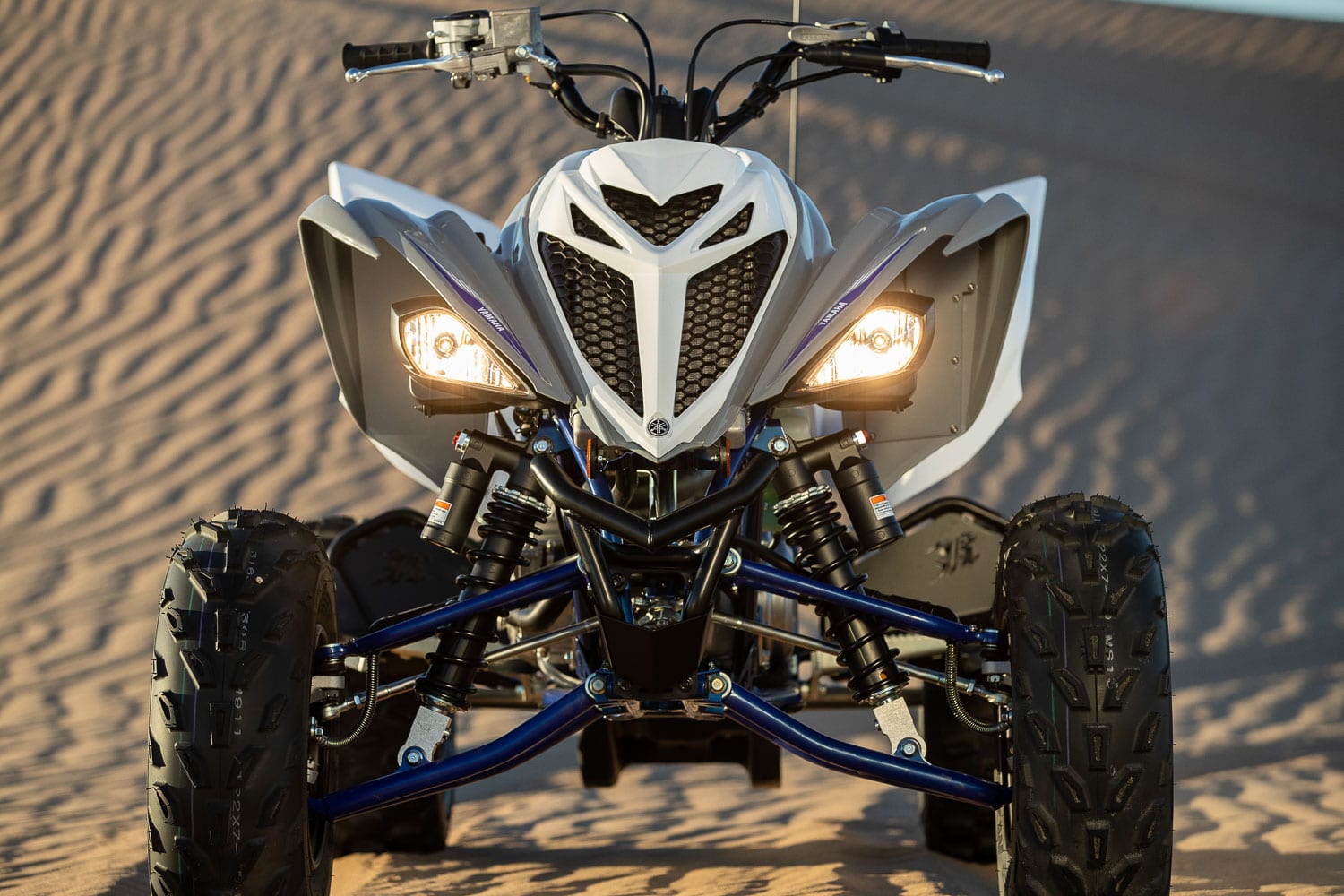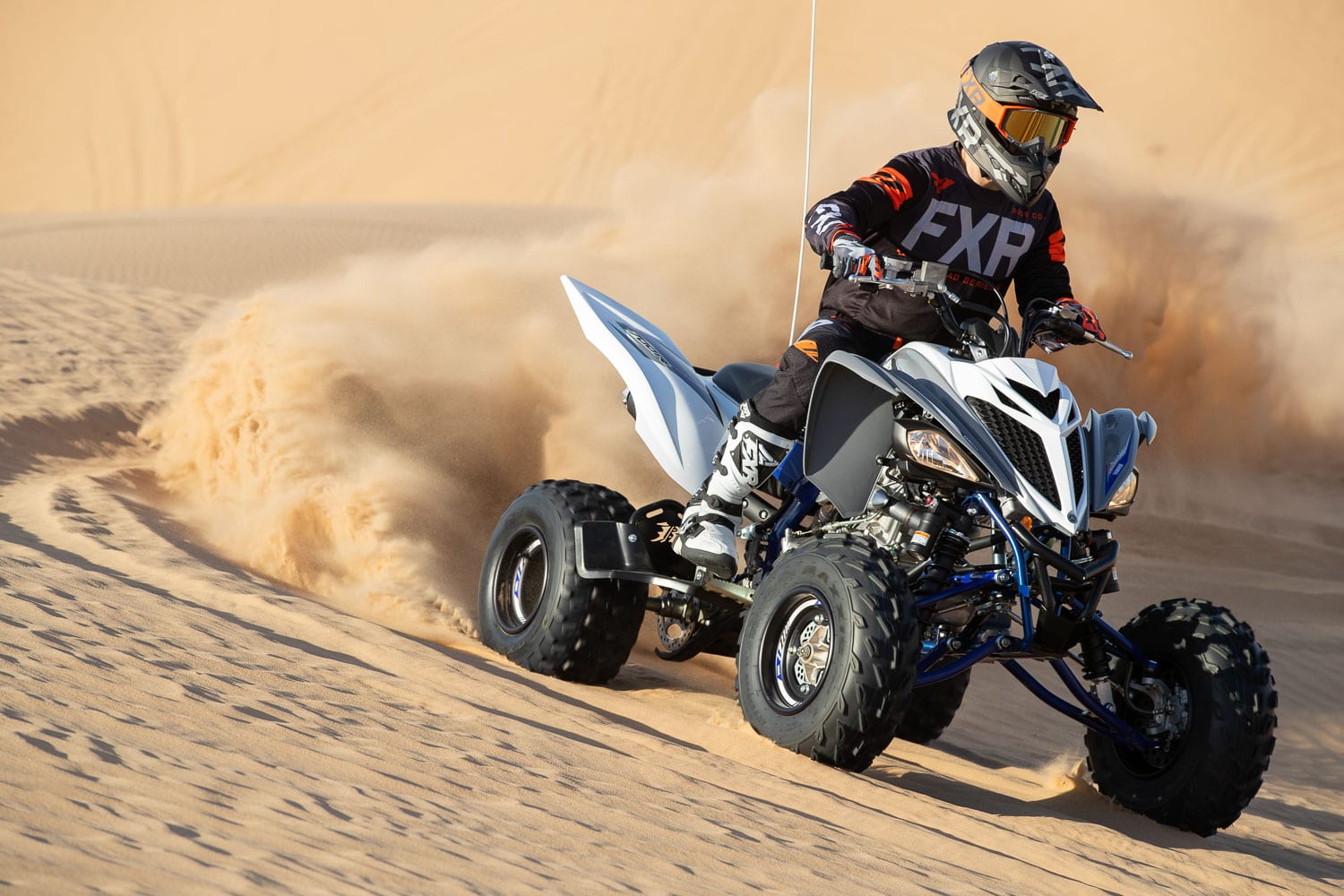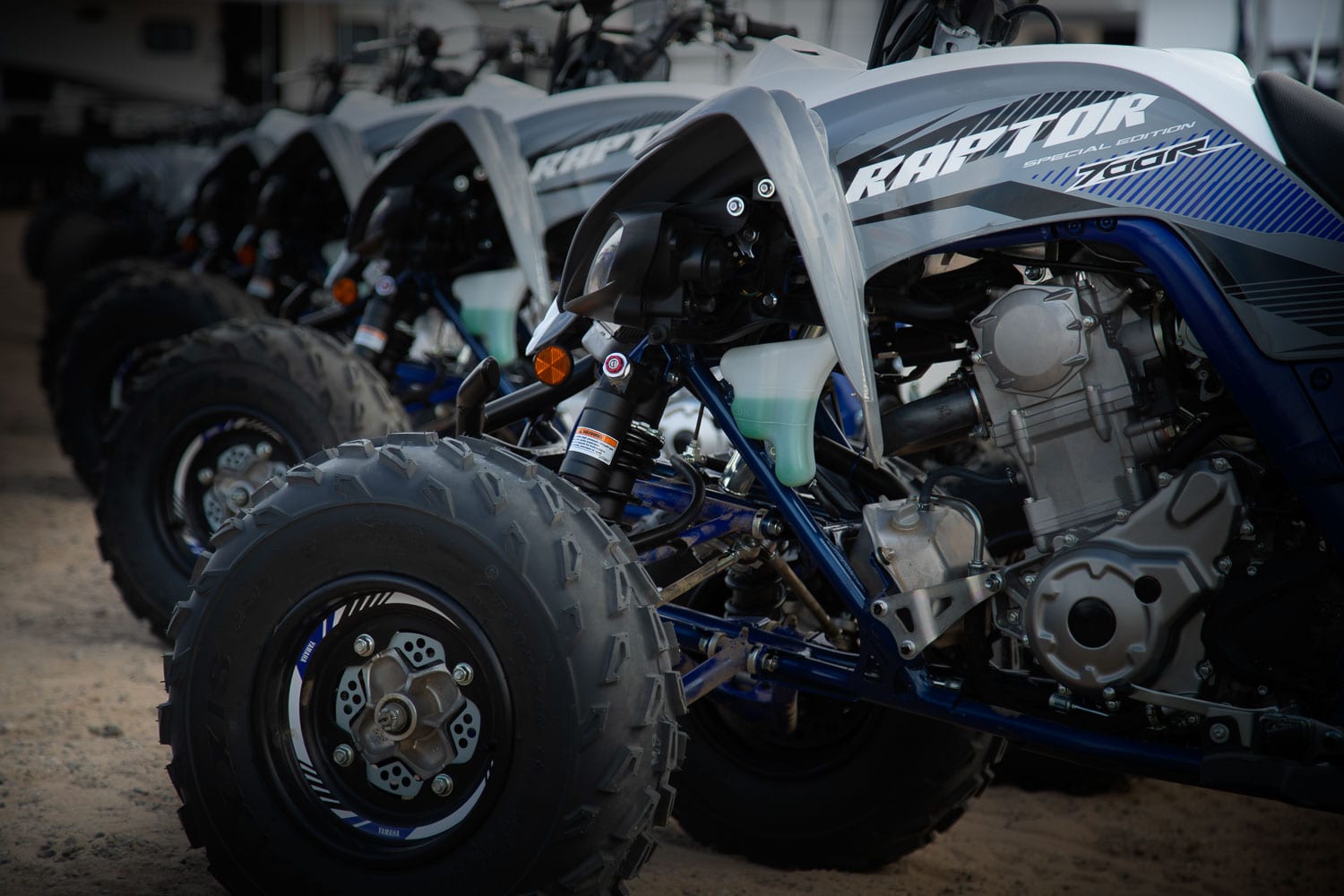History proves at least one thing and that is that the best always floats to the top in any market over time. You can always see the island in the sea and the same can be said for the current ATV industry. Our sport ATV market has always challenged itself to be better and the percentage of available portions to this industry segment is very thin these days. But one company has always managed to keep their claim of dominance afloat by simply giving those go-fast consumers something to go fast on.
The Yamaha Raptor 700 was designed and delivered for the very first time to the awaiting public in the year 2006. Obviously the 660 Raptor had been out for several years at this point, but it was time to really step up the game and make the wooded trails and sand dunes quiver a little more. You see, the 2001 Yamaha Raptor 660 was the first true big bore sport quad of its kind and gently referred to as a torque monster. We are still hearing and speaking this exact statement to this day! It was when not only the engine, but also the suspension components of the Raptor were given even more detailed attention that the immediate dominance began to flourish.
If we can just step back and look down the ladder of success and time just a little closer, we find a partnership between MZ Baghira (Eastern German Engine Manufacturer) and Yamaha during a really tough time in Germany. This original four-stroke engine had been installed into the MZ Baghira dual sport motorcycle and needed some tweaking to make it a good ATV prospect. The 660 mill gave owners four valves, liquid cooling and an overhead cam engine design packaged to deliver this power through a five speed transmission. While the ATV ideas were being developed Yamaha had already installed the engine into their own dual sport motorcycle. But it was very much that bird in the hand that proved it to be a cornerstone of Yamahas ATV future.
Many variations had been developed in the Baghira line-up but when Yamaha began to fit the 659cc mill to a frame with two rear wheels it needed to consider many things. Power output and reverse gear being two of those with clutch enhancements to handle the second rear wheel being another. There was also the redesign of the cases to make this power plant fit more snugly into the framework Yamaha had in mind for the Raptor. Finally, most might not remember that the Raptor engine in its infancy actually had twin 33mm Mikuni carburetors providing fuel to the behemoth. This was also redesigned and changed to fuel injection for the 700 Raptor when it was released in 2006. It was from these humble beginnings that we are now graced with this dominant sport ATV.
Actually, in hindsight, none of the other manufacturers could keep the reigns tight enough to compete with Yamaha Raptor sales. Kawasaki built the KFX700 known to many as the V-Force, Honda jumped into the fold with their TRX700XX, and even the Can-Am DS650 couldn’t keep up with the overwhelming popularity of this machine. In a time when the Two-Stroke (Two-Smokers) was fading due to overwhelming pressures at the government levels, this new four-stroke madness had begun a rise to the top. It truly is one of a kind in its segment and continues to this day.
Fast forward to the latest models of the Raptor and you will still find great engineering as well as a continued effort to remedy any slight modifications to keep improving on the legacy of Raptor. As mentioned previously, the Raptor 700 came to market in 2006 with a fresh aluminum cylinder, sleeved in steel that pounded out additional displacement up to 686cc’s. With a fully massaged 4-valve head design and fuel injection, the engine was ready to put its money down on another piece of the ATV market pie.
Yamaha would continue to make great strides in the development of the Raptor by building a new frame that had a steel undercarriage an aluminum subframe. Yamaha engineers also wanted better geometry for the suspension that would allow the quad to have more shock travel in the back end. Actually the front of this latest Raptor has 9.1 inches of suspension travel up front and 10 inches out back. Ultimately, that gave the Raptor 700 better handling, an even more powerful engine, as well as a signature by product of a sleeker look.
So now that you have a slight back ground into the ever-popular Yamaha Raptor 700R lets go for a ride. We had a chance to explore latest characteristics of this 2019 Raptor 700SE in the wild, wide open dunes of Glamis California to see if it still lives up to the hype! Our day was filled with rough rutted dunes as the wind had not been steady enough to smooth out the torque made divots in the sand but we were not going to allow this to distract us.
For 2019 the Yamaha Raptor 700SE comes with 22-inch Maxxis front tires and 20-inch Maxxis rears that do help absorb some of the light roughness in the sand and really gives the ATV good grip as well as plenty of traction. Some would say that a regular atv tire could not work well in the sand but for our ride experience, the stock tires actually make for a very fun and spirited ride. The paddle tire gets a lot of attention here and although it is developed to provide good forward traction it is not needed if you simply plan your stops strategically. With several years of experience on both types of tire we think the stock tires provide more of a fun ride without draining the power out of the engine. The solid rear axle also allowed us to slide the ATV around giving up that sporty feeling when you roll on the throttle.
When you finally get into some smooth sand the 686cc fuel injected single cylinder has so much bottom and mid-range torque that a second or third gear is about all you need to roll across most of the dunes. It is also really easy to get the front of the ATV light in those situations that require it. The flowy sand berms and tall dunes that our guide had taken us on just seemed to form a rhythm. After a few sharp drop ins and then some serious climbs up sand mountains it was clear that third gear was the place to be for the biggest part of our ride. The low range pull of this motor is still incredible to this day and a very familiar feeling from the first time we had ridden this ATV. The biggest attractions in the Imperial Sand Dunes is possibly the massive hills like China Wall and Oldsmobile hill. Although we did not get to the China Wall, we did climb Old’s a time or two. Needless to say, this ATV has very little issue if any to get over the top.
As we rode this sport quad, we also recall just how comfortable this chassis is for larger as well as older riders. The updated suspension makes cornering and overall handling characteristics friendly but does seem to still be pretty high in the saddle. We’d say that in tight woods at higher speed you might find issue with this but for the sand it went primarily unnoticed. Getting your feet planted on the pegs is really easy as the pegs are wide and have great holding grip for most any footwear. They are also engineered to be able to raise or lower the pegs for different sized riders, but our test machine remained in the “off the showroom floor” neutral setting which seemed to be good enough. The large seat on the Raptor 700 is comfortable and allowed us to move around across both sides. There seems to also be plenty of room when slipping backwards on the ATV while cruising the sand at speed. If you ever get caught off guard by a sudden g-out or obstacle in the trail or sand, you can also appreciate the fact that the seat extends up on the gas tank as well. Just remember to lay into the thumb throttle and let the combination of rear weight and massive torque pull you across the obstruction. The suspension is set to a standard setting from the factory for a general rider weight and height. Even though there could have been a little adjustment to tweak the ride, this 6ft tall ride never felt fatigued from the 5-plus hours of consistent riding.
Our adventure on the Raptor was like revisiting an old friend. It just proved that once a machine makes its mark on the world it, good or bad, it always reminds us why we loved or hated it. In this case the 2019 Yamaha Raptor might always be our favorite Sport ATV for dune riding.
2019 Yamaha Raptor 700R SE Specifications
- Engine Type: 686cc, liquid-cooled, SOHC 4-stroke; 4 valves
- Bore x Stroke: 102.0mm x 84.0mm
- Compression Ratio: 10.0:1Fuel Delivery: Yamaha Fuel Injection (YFI), 44mm throttle bodies
- Ignition: TCI: Transistor Controlled Ignition
- Starting System: Electric
- Transmission: 5-speed w/ reverse; wet multi-plate clutch
- Final Drive: X-ring chain; 2WD
- Front Suspension: Independent double A-arms w/ piggyback high/low-speed compression, rebound, and threaded preload adjustment, 9.1-in. travel
- Rear Suspension: Cast aluminum swingarm w/ piggyback high/low-speed compression, rebound, and threaded preload adjustment, 10.1-in. travel
- Front Brakes: Dual hydraulic discs
- Rear Brakes: Hydraulic disc
- Front Tires: AT22 x 7-10 Maxxis
- Rear Tires: AT20 x 10-9 Maxxis
- Length/Width/Height: 72.6/45.5/43.9 in.
- Seat Height: 32.7 in.
- Wheelbase: 50.4 in.
- Maximum Ground Clearance: 9.5 in.
- Fuel Capacity: 2.9 gal.
- Wet Weight: 422 lb.
- Lighting: Dual 30-watt Krypton headlights and LED brake light
- Warranty: 6-month (limited factory warranty)
- Colors: Red; Armor Grey


